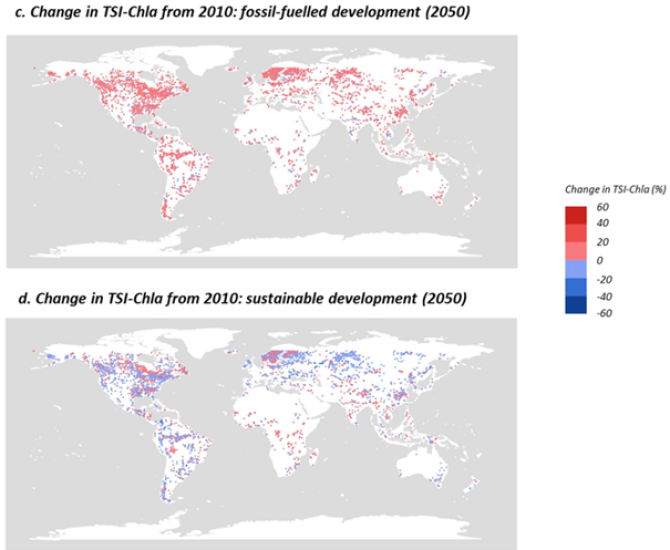
News
The future of algal blooms in lakes globally is in our hands
What does the future hold for our lakes globally — clear waters or widespread algal blooms? A new study is the first to model and project algal blooms on a global scale under different socio-economic and climate scenarios . Conducted by Wageningen University & Research and NIOO-KNAW, the research offers new insights into how ecosystems may be affected and the role we play in shaping that future.
Lakes provide essential ecosystem services such as food production, water supply, and climate regulations. These are directly tied to the health of their ecosystems. Eutrophic lakes, which have an excess of nutrients, are more likely to be dominated by algal blooms. These blooms can harm plants that grow in the lake (macrophytes) and animals that live on the bottom of the lake (benthic communities). Consequently, the lake’s ability to support vital ecosystem services is reduced.
Future scenarios
The team’s modelling approach shows that in the recent past, taken as the baseline, 56% of representative lakes worldwide were below the eutrophication threshold, while the remaining 44% were above the threshold. This situation may worsen depending on our decisions regarding societal activities affected by climate change.
The research shows that in a future dominated by fossil fuels, 91% of representative lakes on Earth will become more polluted with algal blooms due to too many nutrients from human activities. In contrast, in a future where environmental actions such as technological developments, improved wastewater treatment and lower meat consumption prevail, 63% of representative lakes may become less polluted and thus may develop fewer algal blooms. These changes are primarily attributed to shifts in nutrient pollution. Although not significant, climate change is also expected to exacerbate algal blooms, making it even more challenging for lake managers to maintain water quality.
New modelling system
These new insights were possible by a newly coupled modelling system that was developed by connecting a watershed model on water quality (MARINA) with a process-based lake ecosystem model (PCLake+). This was the first attempt on a global scale, opening opportunities to study better lake responses to watershed activities and exploring effective solutions under global change.
The authors highlight the importance of promoting effective lake management policies to adapt to climate change and mitigate nutrient pollution from watersheds. Collaboration is vital in such interdisciplinary research to produce new knowledge and inspire others to take action.
